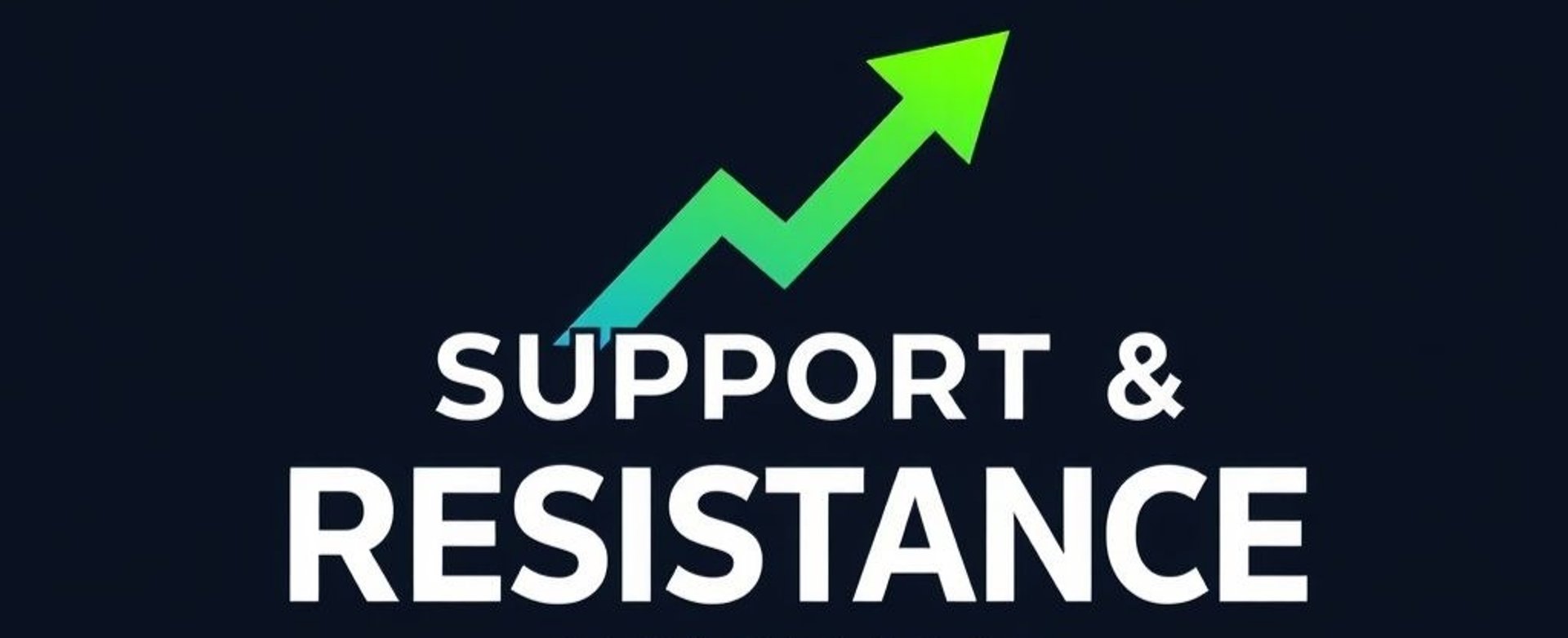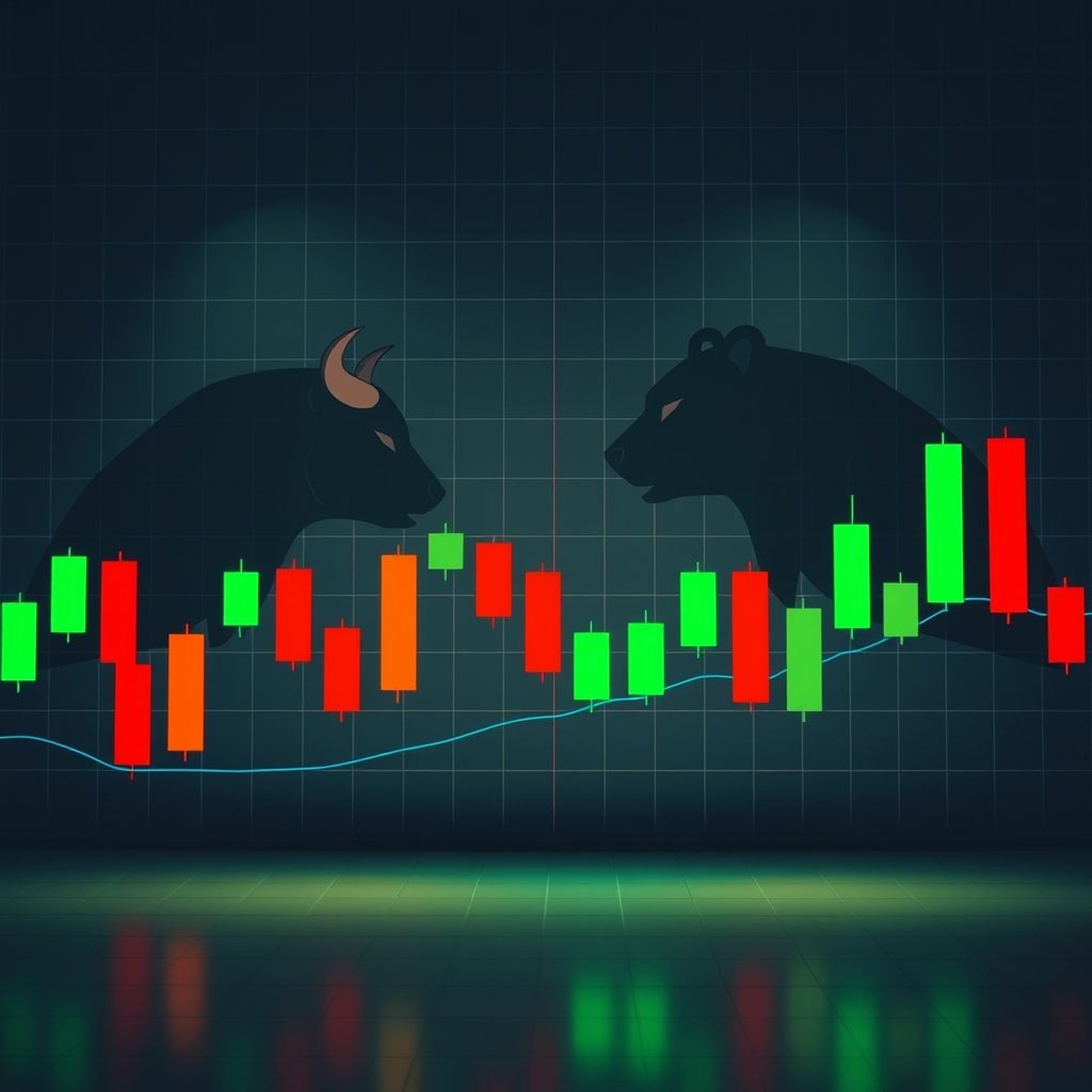Crypto Insights Hub
Your go-to resource for all things crypto, from basics to advanced trading strategies and trends.

Understanding Support and Resistance in Cryptocurrency Trading
Cryptocurrency trading is a fast-paced and volatile market where price movements can be unpredictable. One of the fundamental concepts that traders use to analyze and predict these movements is support and resistance. These key levels help traders make informed decisions about when to buy or sell assets, reducing risk and increasing profitability.
What is Support?
Support is a price level where an asset tends to stop falling and may bounce back up. It represents a psychological or technical level where buying interest is strong enough to prevent further decline. Support levels are formed due to a high concentration of buyers who see the price as a good entry point.
For example, if Bitcoin repeatedly drops to $40,000 but does not fall below it, that price level becomes a support level. Traders use support levels to identify buying opportunities, as prices are expected to rebound from these levels.
Types of Support
Horizontal Support – A price level that remains constant over time (e.g., Bitcoin consistently bouncing from $40,000).
Trendline Support – A diagonal support level where prices move upward, forming higher lows.
Moving Average Support – Support created by moving averages (e.g., the 50-day or 200-day moving average acting as a price floor).
What is Resistance?
Resistance is the opposite of support. It is a price level where an asset tends to stop rising and may pull back due to selling pressure. It forms because traders believe that the asset is overvalued at that level and start selling.
For instance, if Ethereum struggles to rise above $3,500 multiple times, that level becomes a resistance zone. Traders often use resistance to identify selling opportunities, as the price may struggle to break through.
Types of Resistance
Horizontal Resistance – A static price level where an asset repeatedly faces rejection.
Trendline Resistance – A downward-sloping trendline that prevents the price from rising.
Moving Average Resistance – Resistance formed by moving averages, where the price struggles to break above key moving averages.
How to Use Support and Resistance in Crypto Trading
1. Identifying Entry and Exit Points
Buy near support levels when the price shows signs of bouncing.
Sell near resistance levels when the price starts to decline.
2. Breakout and Breakdown Trading
If the price breaks above resistance, it could signal a strong uptrend (bullish breakout).
If the price breaks below support, it could indicate a downtrend (bearish breakdown).
3. Stop-Loss and Take-Profit Placement
Place stop-loss orders below support to protect against further downside.
Set take-profit targets near resistance to secure gains.
4. Support and Resistance Flip
A broken resistance level can become new support (bullish signal).
A broken support level can turn into new resistance (bearish signal).
Final Thoughts
Support and resistance are essential tools in cryptocurrency trading, helping traders navigate price movements with better precision. However, no strategy is foolproof, and market conditions can change rapidly. To improve accuracy, traders often combine support and resistance with indicators like RSI, MACD, and volume analysis.
Understanding these concepts and applying them effectively can enhance trading performance and risk management in the volatile world of crypto.

Understanding Candlesticks and Their Use in Crypto Trading
Candlestick charts are one of the most powerful tools used in cryptocurrency trading. They provide traders with detailed insights into price movements and market sentiment, helping them make informed decisions. Unlike simple line charts, candlestick charts display price action within specific time frames, showing key details such as opening, closing, high, and low prices.
In this article, we’ll explore what candlesticks are, how to interpret them, and how traders use them to predict price movements in crypto trading.
What is a Candlestick?
A candlestick represents the price movement of a cryptocurrency within a specific time frame (e.g., 1 minute, 1 hour, 1 day). Each candlestick consists of three main components:
Body – Represents the opening and closing prices of the asset.
Wicks (Shadows) – The thin lines above and below the body that show the highest and lowest prices reached.
Color – A green (or white) candle indicates a price increase (bullish), while a red (or black) candle signifies a price decrease (bearish).
Example of a Candlestick
If Bitcoin opens at $40,000 and closes at $41,000, the candlestick is green.
If it opens at $40,000 and closes at $39,000, the candlestick is red.
The wicks show the highest and lowest price Bitcoin reached within that time frame.
Common Candlestick Patterns and Their Meaning
Candlestick patterns help traders predict future price movements by analyzing past price action. Here are some of the most widely used candlestick patterns in crypto trading:
Bullish Candlestick Patterns (Indicate a Potential Uptrend)
Hammer – A small body with a long lower wick, indicating a potential reversal to the upside after a downtrend.
Bullish Engulfing – A large green candle completely engulfs the previous red candle, signaling strong buying pressure.
Morning Star – A three-candle pattern where a small-bodied candle appears between a red and a green candle, signaling a bullish reversal.
Bearish Candlestick Patterns (Indicate a Potential Downtrend)
Shooting Star – A small body with a long upper wick, indicating potential price rejection and a bearish reversal.
Bearish Engulfing – A large red candle engulfs the previous green candle, showing strong selling pressure.
Evening Star – The opposite of the morning star, signaling a bearish reversal after an uptrend.
Indecision Candlestick Patterns (Neutral Signals)
Doji – A candle with little to no body, meaning the opening and closing prices are almost equal. This indicates market uncertainty.
Spinning Top – A candle with a small body and long wicks on both sides, showing indecision between buyers and sellers.
How Traders Use Candlestick Charts in Crypto Trading
1. Identifying Market Trends
Candlestick patterns help traders determine whether a market is in an uptrend, downtrend, or ranging phase. For example, a series of bullish engulfing patterns can confirm an uptrend, while bearish engulfing patterns suggest a downtrend.
2. Confirming Support and Resistance Levels
Candlestick formations near support and resistance levels can confirm potential breakouts or reversals. If a hammer forms at support, it suggests buyers are stepping in. Conversely, a shooting star at resistance signals sellers taking control.
3. Timing Entry and Exit Points
Traders use candlestick patterns to time their trades more effectively. For example, buying after a bullish engulfing candle at support can increase the chances of a successful trade. Similarly, selling after a bearish engulfing candle near resistance can help secure profits.
4. Using Candlestick Patterns with Other Indicators
For greater accuracy, traders often combine candlestick patterns with technical indicators like:
Moving Averages (MA) – To identify trends and dynamic support/resistance.
Relative Strength Index (RSI) – To confirm overbought or oversold conditions.
MACD (Moving Average Convergence Divergence) – To spot trend reversals.
Final Thoughts
Candlestick charts are essential for cryptocurrency traders, providing valuable insights into market sentiment and price action. By understanding candlestick patterns and combining them with other technical indicators, traders can make better-informed decisions, improve their risk management, and increase their chances of successful trades.
Whether you are a beginner or an experienced trader, mastering candlestick analysis is a key skill for navigating the highly volatile crypto market.
